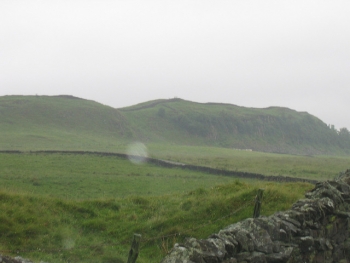Hadrians Wall and Stonehenge

Despite its small size, Britain has a varied landscape, ranging from the flat countryside in Norfolk to the Welsh mountains, the Scottish Highlands and the mountainous English Lake District. Older towns often retain their original fortified walls and castles, many now in ruins. The Romans were in Britain from the 1st to the 4th centuries. In the 1st century when the Roman emperor Claudius came with his armies, he had to fight many battles with the Celtic tribes who lived there. Four hundred years later, when they could no longer defend their great empire, the Romans left.
During the four centuries the Romans were in Britain, they built towns with fine buildings and many roads. London, for example, was already a town in Roman times. From London people could travel north, west and east along the straight roads that the Romans built for their armies. Parts of these roads still exist, and in many places modern roads follow the same routes. In the countryside important Romans owned beautiful villas. These were attractive buildings with mosaic floors and gardens. Today visitors can see some of these lovely floors (for example, Fishbourne Villa in Sussex). In the 2nd century the Roman emperor Hadrian visited Britain.
At that time the Celts were attacking from the north. Hadrian decided to build a strong wall along the northern border with several forts and roads on both sides. Hadrian`s Wall is about 120 kilometres long. Parts of the wall, about two metres high and three metres wide, still stand. Many tourists go to see the wall.
Stonehenge is a well-known prehistoric monument that stands on the Salisbury Plain in southwestern England. These big stones have been here for more than three thousand years. The outside circle of stones is almost one hundred metres across. But there are still many questions. Who put the stones here and why? Why do the stones stand in circles? Do they have something to do with the position of the sun at different times of the year, or with an ancient religion? Nobody really knows the answers to these questions. Many people come to see these ancient stones – over a million a year.
